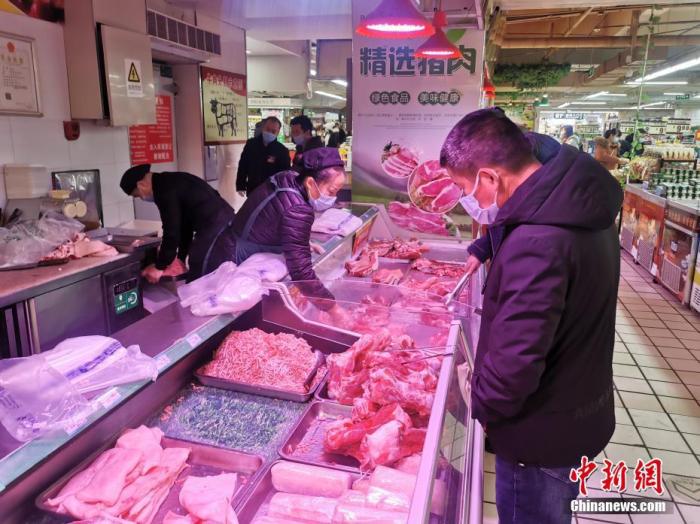China News Service, December 15th. National Bureau of Statistics spokesperson Fu Linghui said on the 15th that the year-on-year decline in consumer prices in November was mainly due to the decline in food prices, and pork prices were the most important factor.
He also pointed out that the price situation in the consumer sector has not changed significantly.
Data map: People buy in a supermarket.
Photo by Mo Yu issued by China News Service
The State Council Information Office held a press conference on the 15th to introduce the operation of the national economy in November 2020.
A reporter asked at the meeting: In November, the consumer price index turned from positive to negative, and the increase in core CPI rose to 0.5% in July and has not changed. Some analysts believe that China is also facing the risk of deflation. How does the National Bureau of Statistics view the current situation? Deflation risk?
In response, Fu Linghui responded that since the beginning of this year, the increase in consumer prices has generally been high and low. In November, consumer prices fell by 0.5% year-on-year. This is the first year-on-year decline since October 2009. The year was mainly due to the impact of the international financial crisis.
From a structural point of view, the year-on-year decline in consumer prices in November was mainly due to the decline in food prices.
Food prices in November changed from a 2.2% increase in the previous month to a decrease of 2% year-on-year, which affected the CPI drop of about 0.44 percentage points that month.
The price of pork was the most important factor. The price of pork fell by 12.5% year-on-year, which affected the CPI drop by about 0.6%.
One reason for the decline in pork prices is due to the recovery of live pig production this year, the increase in production capacity and the increase in supply; the other reason is the relatively high base in the same period last year.
Judging from the core CPI excluding food and energy, in November, it rose 0.5% year-on-year, and remained stable at this level for five consecutive months, indicating that the price situation in the consumer sector has remained basically stable except for energy and food prices.
In November, service prices rose 0.3% year-on-year, which was also stable for two consecutive months.
Fu Linghui pointed out that the above data reflects that the price situation in the consumer sector has not undergone major changes.
Fu Linghui emphasized that from the perspective of future development, there are still many favorable conditions for the stable operation of consumer prices.
First, from the perspective of market demand, whether it is investment demand or consumer demand, the entire market demand is expanding.
Second, from the perspective of market expectations, among the manufacturing PMIs in November, the ex-factory price index is in the boom range, which has increased from the previous month, indicating that the market's price expectations are still optimistic.
Third, this year’s grain harvest has been bumper, stabilizing at more than 1.3 trillion catties for six consecutive years. Together with the recovery of live pig production capacity, pork prices have also fallen, which has played an important role in the overall stability of prices.
Finally, the timely implementation of measures to ensure supply and price stabilization is conducive to price stability.
As economic operations gradually return to normal, consumer price increases will return to a reasonable level.
In addition, the reporter asked: Regarding industrial added value, from the perspective of main product output, the growth rate of most products in November was narrower than that in October. On the other hand, the overall industrial value added growth rate expanded. Why did this happen? Happening?
Fu Linghui said that with regard to industrial growth, changes in industrial output and value volume do not completely correspond.
In recent years, with the development of consumption upgrades, sales of some mid-to-high-end products have been relatively hot, driving the output growth of related products, and these products have higher added value.
Due to the influence of product structure, the change in output and the change in value are not completely consistent.
Looking at the industry as a whole, it should be said that the recovery of industrial production has been strengthened.
In terms of production, in November, the industrial added value increased by 7%, which was slightly faster than the previous month, which is also a relatively fast pace this year.
From the price point of view, the decline in the PPI of industrial producers’ ex-factory prices continued to narrow, with a year-on-year decrease of 1.5% this month and a decrease of 2.1% last month.
From the perspective of corporate profits, the cumulative profits of industrial enterprises above designated size in the first 10 months increased by 0.7% year-on-year, turning from negative to positive for the first time.
Based on these circumstances, the trend of stable recovery of industrial production has been maintained.

